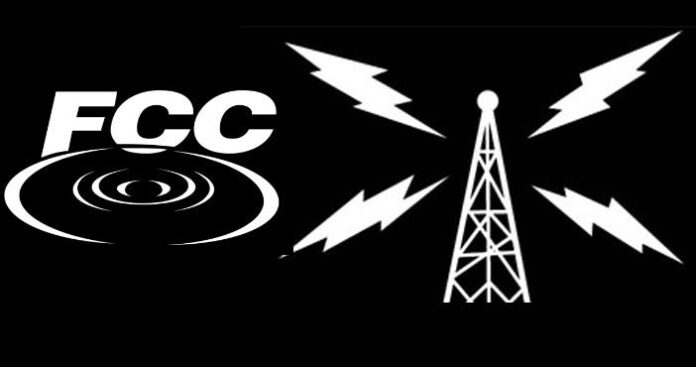The Federal Communications Commission this week reiterated its prohibition on the use of so-called cellphone jammers, including by state and local government and law enforcement agencies.
“Jammers do not just weed out noisy or annoying conversations and disable unwanted GPS tracking,” the FCC noted. “Jammers can prevent 911 and other emergency phone calls made by the public from getting through to first responders or interfere with police and other law enforcement communications that are critical to the carrying out of law enforcement missions. Jammers also prevent the public, including individuals and businesses, from engaging in any of the myriad lawful forms of communication that occur constantly in all corners of the country – simple one-on-one phone conversations, communication among persons in large groups (such as during lawful rallies and protests), use of GPS-based map applications, social media use, etc.”
The operation of jammers is currently limited to “authorized” federal agencies that have received permission. It’s also illegal to import, advertise or sell jammers, with fines of more than $100,000 per violation.
The use of jammers has been a contentious issue for regulators as previous rules have allowed the use of such devices by law enforcement agencies in cases where an explosive device could be triggered by a cellphone or to interrupt communications for cellphones that are smuggled into prisons.
The issue was also brought up in the case of wireless signal repeaters sold by third parties that if not installed correctly could interfere with wireless communication signals generated by mobile operators. The FCC has since approved the use of signal boosters, though they have to conform to stringent regulations.
The FCC earlier this year fined Chinese electronics manufacturer and online retailer C.T.S. Technology $34.9 million for marketing 285 models of signal jamming devices to U.S. consumers over the past two years. The FCC claimed that C.T.S. misled U.S. consumers by telling them that its jammers were approved for use by the FCC. The FCC also said that the firm sold 10 illegal signal jamming devices to undercover FCC personnel.
The FCC this year also fined a Florida man $48,000 for using a cellphone jammer from his automobile that interfered with first-responder communications.
–The FCC also moved forward this week with an extension on the public comment period regarding wireless E911 location accuracy requirements. The comment period had its deadline moved from Dec. 10 to Dec. 15, while the reply deadline has been moved from Dec. 17 to Dec. 24.
The Rural Wireless Association on Dec. 3 initially asked for a 30-day extension on the comment period, claiming its members required additional time to evaluate the technical issues and timelines presented by the “Roadmap for Improving E911” public notice.
“RWA encourages its members to carefully review the Roadmap and consider whether implementation would be possible if the FCC were to apply the Roadmap to all carriers,” the trade organization noted.
T-Mobile US reiterated its support of the indoor location accuracy proposal, which was filed last month and included support from AT&T, Verizon Communications, Sprint, APCO International and NENA.
“The Roadmap’s consensus approach provides the most effective wireless 911 solution, yielding concrete, measurable results long before we would have seen even modest improvements from the proprietary solutions being hyped by some vendors,” explained Steve Sharkey, senior director of government affairs at T-Mobile US in a blog post.
–The Competitive Carriers Association said it supported the FCC’s move to extend the comment period related to its Competitive Bidding Notice of Proposed Rulemaking until Jan 23. CCA explained the move would provide greater clarity into potential rulemaking for the planned 600 MHz incentive auction until after the current Auction 97 proceedings – also known as the AWS-3 auction – conclude.
“Knowing the final results of the AWS-3 auction will allow carriers to have a full picture of the competitive bidding landscape and will help them prepare more informed comments in response to the NPRM,” explained Steve Berry, president and CEO of CCA. “It is absolutely critical for the FCC to ensure that the largest carriers cannot foreclose competition from the auction. Consumers deserve competitive choices, and I look forward to our continued work with the FCC to ensure all carriers may participate in the incentive auction in a meaningful way.”
The FCC rolled out the NPRM in October, which included potential rule changes tied to the FCC’s controversial designated entity program offering bidding credits to select entities based on their size and ownership structure. Part of the proposal looks to remove barriers preventing DEs from leasing spectrum to other non-DE operators.
The FCC is also looking to re-classify the financial threshold on potential DEs to provide a 35% bidding credit for businesses with average annual gross revenue not exceeding $4 million for the preceding three years; a 25% bidding credit for average annual gross revenue not exceeding $20 million for the preceding three years; and a 15% bidding credit for businesses with less than $55 million in average annual gross revenue for the preceding three years.
In addition, the FCC will look to revisit the “defaulter rule” that requires higher up-front down payments from companies with a history of defaulting on payments to the government agency tied to previous spectrum auctions. The FCC relaxed the defaulter rules for Auction 97.
Make sure to keep up to date on policy news by visiting RCR Wireless News’s Policy page.
Bored? Why not follow me on Twitter?

